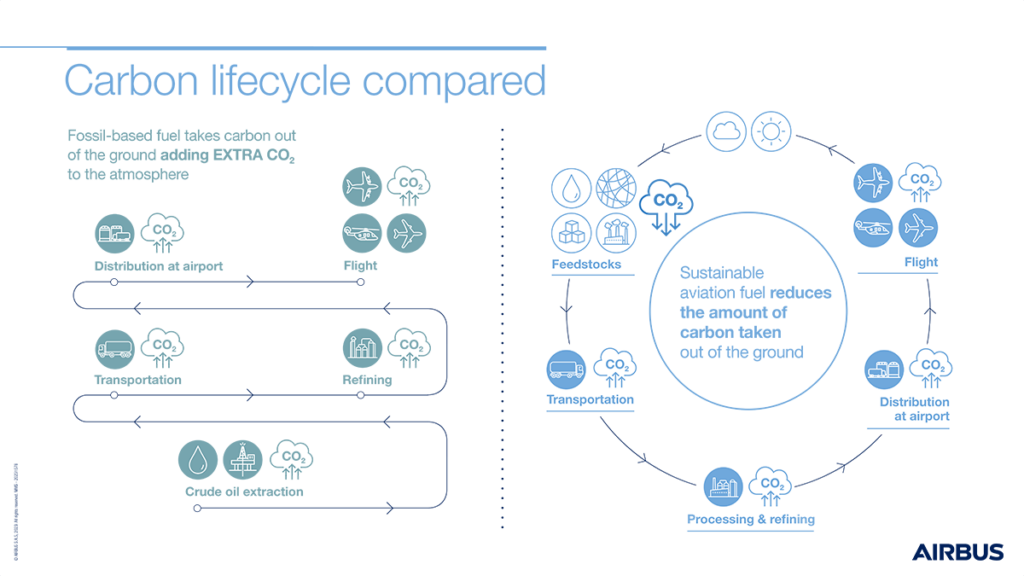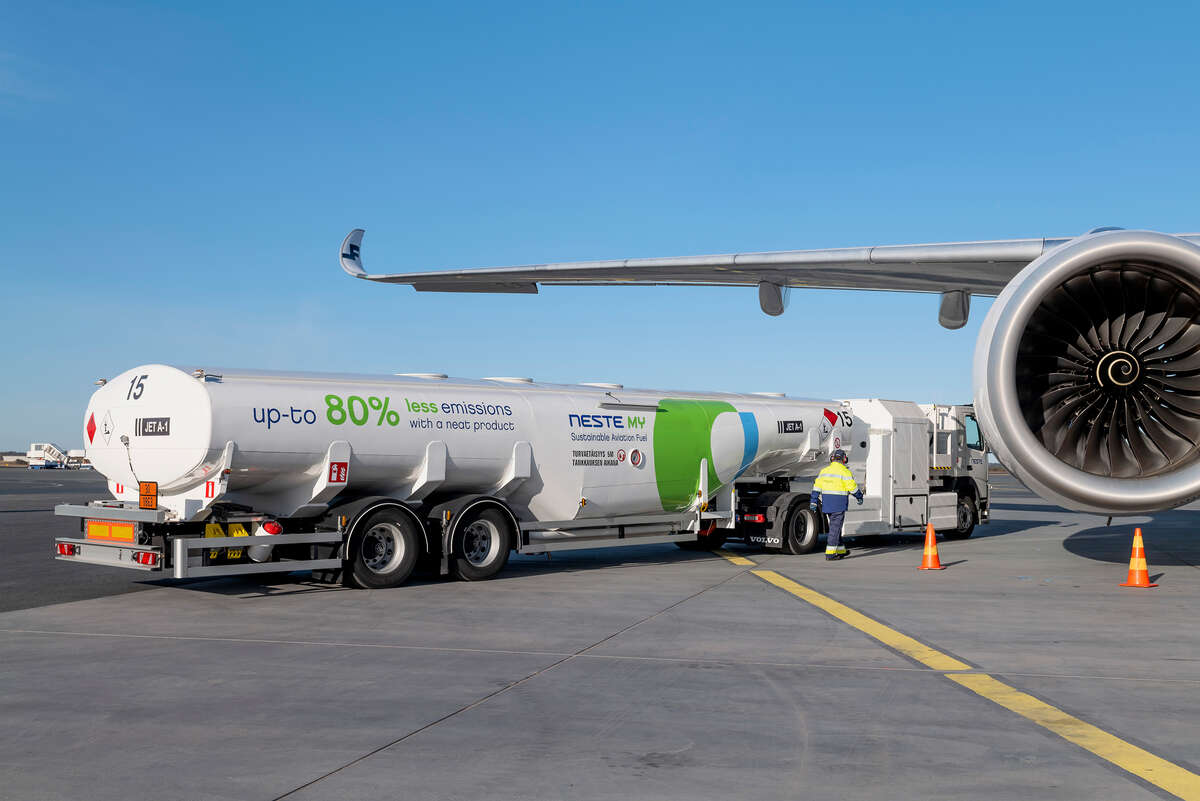In recent years, the aviation industry has been making significant strides towards sustainability, driven by government regulations to reduce greenhouse gas emissions. One promising avenue for achieving this goal is the development and adoption of sustainable aviation fuels (SAFs), renewable alternatives to traditional jet fuels derived from fossil sources. As airlines, manufacturers, and governments increasingly prioritize sustainability, SAFs are emerging as a key solution to decarbonize air travel and pave the way for greener skies.
SAFs, also known as biofuels or alternative aviation fuels, are produced from sustainable feedstocks such as agricultural residues, waste oils, algae, and biomass. Unlike conventional jet fuels, which are derived from finite fossil resources and emit large amounts of CO2 when burned, SAFs offer a more environmentally friendly alternative. When produced and used properly, SAFs can significantly reduce the carbon footprint of aviation, as they have the potential to emit up to 80% less CO2 over their lifecycle compared to conventional jet fuels.
The adoption of SAFs is gaining momentum worldwide, with airlines and aircraft manufacturers increasingly investing in research, development, and production infrastructure to scale up SAF production and usage. Leading airlines such as Delta Air Lines, United Airlines, and Lufthansa have committed to integrating SAFs into their operations, while aircraft manufacturers like Boeing and Airbus are exploring ways to certify their aircraft for SAF use.

Sustainable aviation fuels (SAFs) are made from a variety of renewable feedstocks, each with its own production process and environmental benefits. Some of the common feedstocks used in SAF production include:
- Plant Oils: Plant oils, such as vegetable oils from soybeans, canola, palm, and coconut, can be processed into biofuels through a process called transesterification. This process involves converting the oils into fatty acid methyl esters (FAME), which can then be blended with petroleum-based jet fuel to create SAFs.
- Animal Fats: Animal fats and waste oils from food processing facilities can also be converted into biofuels through a similar transesterification process. These feedstocks offer a sustainable alternative to traditional jet fuels and help reduce reliance on fossil resources.
- Cellulosic Biomass: Cellulosic biomass, including agricultural residues, forestry waste, and dedicated energy crops such as switchgrass and miscanthus, can be converted into biofuels through biochemical or thermochemical processes. These processes break down the cellulose and lignin in the biomass to produce sugars, which can then be fermented into bioethanol or converted into hydrocarbon fuels through processes such as gasification and Fischer-Tropsch synthesis.
- Algae: Algae-based biofuels are produced from photosynthetic microorganisms that convert sunlight and carbon dioxide into lipids (oils) through photosynthesis. These lipids can be extracted and converted into biodiesel or renewable diesel, which can be used as SAFs.
- Municipal Solid Waste: Organic waste materials from municipal solid waste streams, such as food scraps, yard waste, and paper products, can be processed into biofuels through anaerobic digestion, fermentation, or gasification. These processes produce biogas, which can be upgraded to produce renewable natural gas (RNG) or converted into liquid biofuels.
One of the key challenges facing the widespread adoption of SAFs is the scalability and cost competitiveness of production. While SAFs have demonstrated their technical feasibility and environmental benefits, scaling up production to meet the demand of the aviation industry remains a significant hurdle. Additionally, SAFs currently tend to be more expensive than conventional jet fuels, making them less economically viable for widespread use. However, ongoing research, innovation, and government support are helping to address these challenges and drive down costs.
In addition to reducing greenhouse gas emissions, SAFs offer several other environmental and societal benefits. They can help reduce air pollution and improve air quality around airports and urban areas, as SAFs produce fewer harmful pollutants such as sulfur oxides and particulate matter compared to traditional jet fuels. Furthermore, SAF production can create new economic opportunities in rural and agricultural communities by providing an additional revenue stream for farmers and biofuel producers.
As the aviation industry continues its journey towards sustainability, SAFs are poised to play a crucial role in shaping the future of air travel. With ongoing technological advancements, policy support, and industry collaboration, SAFs have the potential to revolutionize aviation and usher in a new era of greener, more sustainable skies for generations to come.
Sustainable aviation fuels represent a promising pathway towards decarbonizing air travel and mitigating the environmental impact of aviation. By investing in SAF research, development, and production, the aviation industry can accelerate the transition to greener skies and contribute to global efforts to combat climate change. As the momentum behind SAFs continues to grow, the future of sustainable aviation looks brighter than ever before.
Title photo: (c) Neste/Airbus SAS




